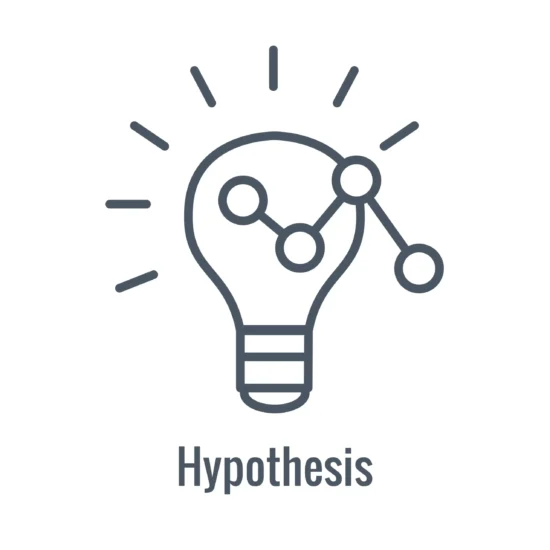Alternative Hypothesis

Table of Contents
Alternative Hypothesis Definition
The alternative hypothesis is a statement that contradicts the null hypothesis and suggests a new theory or condition. It is denoted as H_a or H_1 and proposes that there is a statistically significant relationship or effect between variables.
The alternative hypothesis is what you aim to support through your data analysis.
For example, if the null hypothesis states that two groups have no difference in their mean values, the alternative hypothesis would propose that there is a difference between their means.
Directionality
The alternative hypothesis can be one-tailed or two-tailed. A one-tailed alternative hypothesis specifies the direction of the expected effect (e.g., greater than, less than). In contrast, a two-tailed alternative hypothesis does not specify a direction and is used when looking for any significant difference.
Type I and Type II Errors
In hypothesis testing, rejecting the null hypothesis when it is true leads to a Type I error while failing to reject the null hypothesis when it is false results in a Type II error. The choice of the alternative hypothesis affects the likelihood of these errors.
Effect Size
The alternative hypothesis is related to the effect size, quantifying the magnitude of the difference or relationship being tested. A well-designed alternative hypothesis should reflect a meaningful effect size that interests the researcher.
Statistical Test Selection
The specific alternative hypothesis often determines the appropriate statistical test to use. For example, different alternative hypotheses may require t-tests, ANOVA, chi-square tests, or correlation analyses.
Power Analysis
When designing a study, researchers consider the alternative hypothesis to conduct a power analysis, which helps determine the sample size needed to detect a significant effect if it truly exists.
Research Hypotheses
The alternative hypothesis is directly linked to the research hypotheses being tested. It encapsulates the researcher’s predictions or expectations about the population parameter(s) under investigation.
Alternative Hypothesis Example
Research Question: Does a new teaching method improve students’ test scores in mathematics compared to the traditional method?
Null Hypothesis (H0): There is no difference in the mean test scores between students taught using the new method and those taught using the traditional method.
Alternative Hypothesis (H1): The mean test scores of students taught using the new method are significantly higher than those taught using the traditional method.
Directionality: The alternative hypothesis (H1) specifies the direction of the expected effect, which is an improvement in test scores.
Type I and Type II Errors: A Type I error would occur if we reject the null hypothesis (H0) when it is true, concluding that the new method is better when it’s not. A Type II error would occur if we fail to reject H0 when it is false, concluding that there’s no significant difference when there is.
Effect Size: The effect size here would be the difference in mean test scores between the two teaching methods, indicating the practical significance of the new method.
Statistical Test Selection: A two-sample t-test or ANOVA could compare the mean test scores of students taught with the new method to those taught with the traditional method.
Power Analysis: Before conducting the study, a power analysis would be performed to determine the sample size needed to detect a meaningful difference in test scores with a desired level of statistical power.
Research Hypotheses: The alternative hypothesis (H1) directly reflects the research question and the desired outcome of the study, which is to demonstrate the superiority of the new teaching method in improving test scores.
Related Links
Analysis of Variance
Causation
Statistical Inference
T-Test